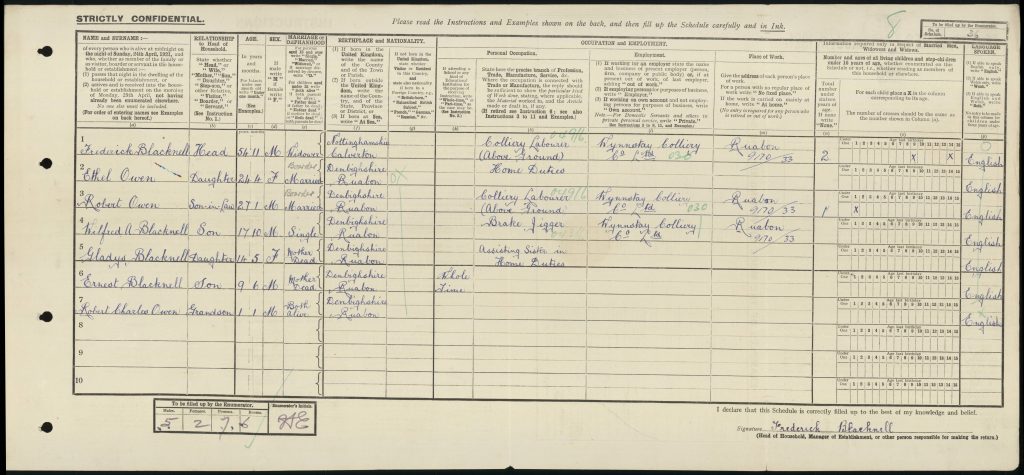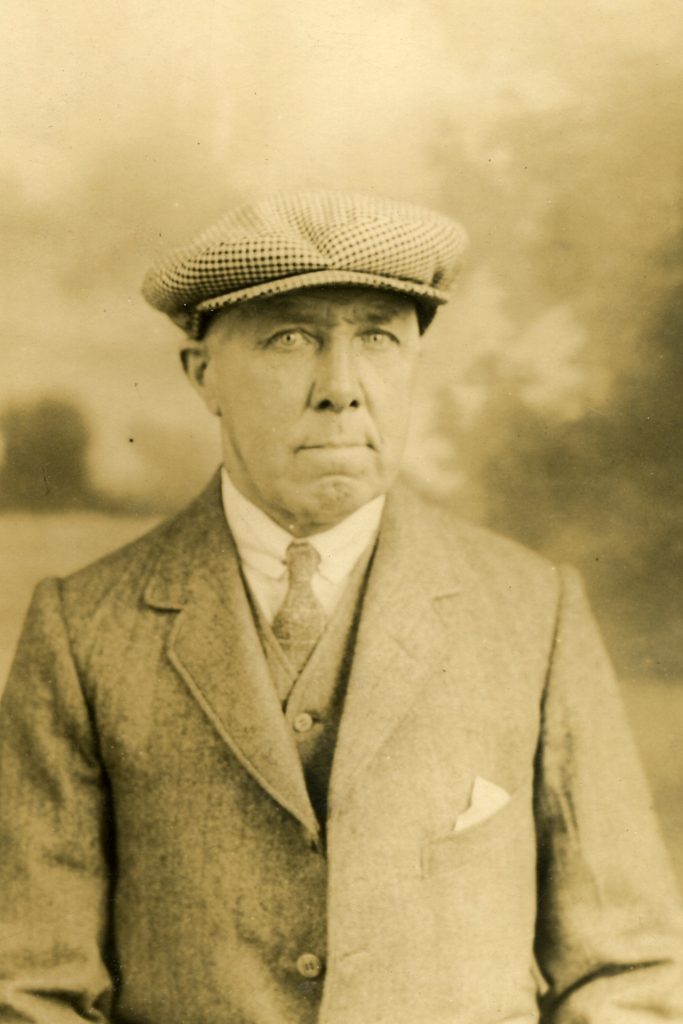So, the long awaited 1921 census has finally been published online. At £3.50 for each record it isn’t cheap but as a devoted genealogist I have been saving my pennies in anticipation for a while. My first purchase was the record for my great-grandfather, Frederick Blacknell.
The record reveals that in 1921 Frederick was living in Duke Street, Ruabon with four of his six children – Ethel, Wilfred, Gladys and Ernest – as well as with Ethel’s husband Bob (Robert Owen) and their baby Bobby (Robert Charles Owen). I was quite surprised to see that the family was living in Duke Street. In 1911 they were living in Dynhynlle Cottage in Pen-y-Lan on the Wynnstay Estate and I didn’t know they had moved into the village before the eventual emigration to Nottingham.

Duke Street must have been quite a squeeze. The house had just six rooms but perhaps not quite such a squeeze as it had been when Frederick was living in Dynhynlle Cottage. That house had five rooms and a total of eleven people in residence, including five adults and two teenagers. Of those five adults living in the cottage in 1911 only Fredrick was still alive in 1921.
The decade between the 1911 and 1921 censuses must have been a difficult time for Frederick with the demise of his mother-in-law, a brother- and sister-in-law but most unfortunately his wife, Clara. Clara had died of uterine cancer in 1918 at the young age of forty-eight, leaving Frederick with six children. By the time of Clara’s death, the eldest of their children (Harry) was already in the Royal Navy and his brother, Frank, the British Army. Ethel was 22 at the time of her mother’s death and assumed responsibility for keeping house, looking after Wilfred, Gladys and Ernest. Some fifty years later I remember Gladys and Ernest still calling Ethel, “Mam”.
One of the most interesting features for me was seeing Frederick give his place of work as the Wynnstay Colliery. Bob Owen and Frederick’s son Wilfred were similarly employed at the colliery in 1921 and I was unaware of these details. To the best of my knowledge Frederick had always worked as some kind of estate labourer so the transition to colliery labourer may well have been unwelcome. The Wynnstay Colliery was established in the mid-nineteenth century and by 1918 there were over a thousand men working underground and over two hundred above. But by July 1927 the colliery closed following industrial action in the previous year.

To the best of my knowledge it was at this point that Frederick, Ethel, her husband Bob, son Bobby and Ernest all moved to Nottingham. This was where Frederick grew up so it would have been a sort of homecoming for him but it must have been quite a shock to Ethel, Bob and Ernest. Both Wilfred and Gladys had married and were to remain in the Wrexham area for the following decades. Bob took a job working for the motorcycle manufacturer Broughs and Ernest worked as a bricklayer’s labourer until the war. There is no information as to what Fredrick did although he would have been sixty when they family moved so perhaps he did not work again.